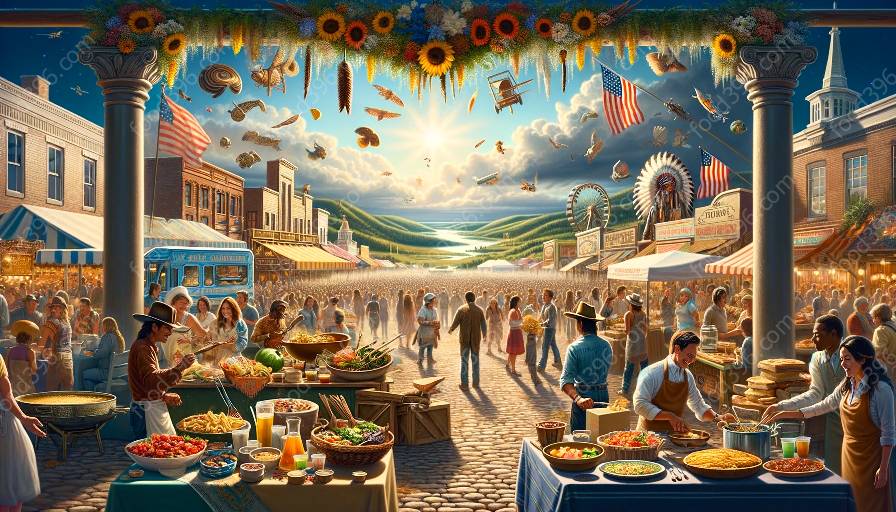Beverages have played a significant role in American culture, influencing not only the way people eat but also how they socialize and celebrate. From the early days of colonial America to the diverse and evolving beverage landscape of today, the history of American beverages is a journey that mirrors the nation's ever-changing culinary heritage.
The Colonial Era: Early Influences and Unlikely Pairings
The history of American beverages can be traced back to the colonial era when the earliest settlers brought with them the traditional beverages of their homelands, such as beer, cider, and wine. Due to limited resources and access to ingredients, colonists had to make do with what was available, leading to the creation of unique beverages.
One such example is switchel, a refreshing beverage made from water, vinegar, and molasses, which served as a hydrating and energizing drink for farm laborers. Another popular colonial beverage was rum, which was heavily consumed and even used as a form of currency in the American colonies.
The Rise of American Beverages: Industrialization and Innovation
The 19th century saw the industrial revolution and significant advancements in beverage production and distribution. Technological innovations, such as pasteurization and the development of bottling and canning methods, allowed for the mass production and preservation of beverages, leading to a surge in popularity and accessibility.
Soda fountains and soda water became fashionable in the late 1800s, thanks in part to the invention of the soda fountain machine and the proliferation of flavored syrups. This marked the beginning of the soda industry, which would later give rise to iconic American soft drinks such as Coca-Cola and Pepsi.
The Prohibition Era: Temperance and Bootlegging
The early 20th century brought about a significant shift in American beverage history with the enactment of Prohibition, which banned the production and sale of alcoholic beverages. This period led to the rise of bootlegging and speakeasies, where people could obtain illegal alcohol and indulge in clandestine drinking establishments.
This era also saw the rise of alternative beverages, such as non-alcoholic tonics and elixirs, which were promoted for their health benefits and as substitutes for prohibited alcoholic drinks.
The Modern Era: Diversification and Global Influence
Following the repeal of Prohibition, the American beverage industry experienced a renaissance, with a proliferation of new and diverse drink options. American consumers were introduced to international beverages, such as coffee and tea, which brought with them new cultural practices and rituals.
The latter half of the 20th century witnessed the emergence of the health and wellness movement, leading to a demand for healthier beverage options and the rise of smoothies, juices, and organic drinks.
The Present and Future: Sustainability and Innovation
Today, the American beverage landscape continues to evolve, with a strong focus on sustainability and innovation. Craft breweries, artisanal distilleries, and small-batch wineries have gained popularity, offering consumers a wide range of unique and locally sourced beverages.
The ongoing fusion of different cultural influences has led to the creation of fusion beverages, blending traditional and modern flavors to cater to the diverse palates of American consumers. Additionally, the emphasis on environmental sustainability has driven the development of eco-friendly packaging and production practices.
A Culinary Connection: Beverages and American Cuisine
The history of American beverages is intrinsically linked with the development of American cuisine. From the use of beverages in cooking and food preservation to the concept of food and beverage pairings, beverages have played a vital role in shaping the American culinary experience.
Iconic American dishes, such as barbecue, fried chicken, and apple pie, are often accompanied by specific beverages that enhance the overall dining experience. The fusion of different cuisines and flavors has led to the creation of unique beverage pairings that complement the diverse tapestry of American cuisine.
The Global Influence: A Culinary Tapestry
American cuisine has been greatly enriched by the global influence of beverages from around the world. The incorporation of international flavors and techniques into American cooking has resulted in a culinary tapestry that reflects the nation's multicultural identity.
This fusion of global and domestic beverages has given rise to a new wave of fusion cuisine, where traditional and modern beverage traditions converge to create innovative and exciting culinary experiences.
In Conclusion: A Taste of History
The history of American beverages offers a window into the cultural, social, and economic forces that have shaped the nation's culinary landscape. From humble colonial brews to the diverse and innovative beverages of today, the evolution of American beverages is a testament to the enduring influence of culture and cuisine.

